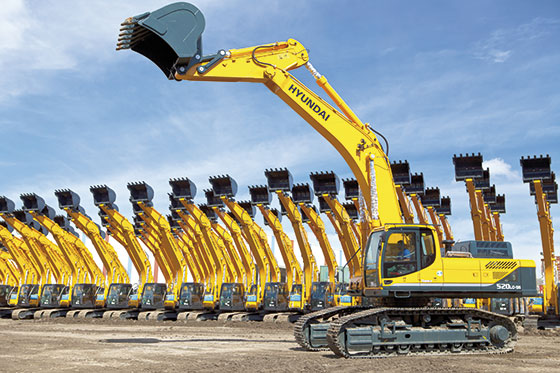Historic decreasing3

Mapping a challenging scenario, the ninth edition of the Estudo Sobratema do Mercado Brasileiro de Equipamentos para Construção (Sobratema Study of the Brazilian Market for Construction Equipment) shows a decrease of 57.8 percent in 2015
In Brazil, the year of 2015 was marked by a reduction of expectations in the economy and in the construction industry and, as a consequence, by a reduction in the demand of equipment for construction and mining. Looking through the perspectives for the fourth quarter, we may say that this was a year to be forgotten. But it will be difficult for any professional related with production, sale, procurement, rental or use of machines to forget so easily one of the worst years of the recent history of this industry. A year that caused the strongest decrease—in quantity and proportion—in equipment sales since Sobratema started to carry out its study, in 2007. This decrease was even quite below that of 2009, in the peak impact of the international financial crisis. And at the contrary of 2010—when the Brazilian market quickly took a strong pace of increase—the industry expectation is quite low for the next year.
The bad year caused a violent decrease in the income of several companies, starting a tragic wave of resignations—for the professionals involved and also for the companies, which lost important technical and qualified people. And this is occurring in a country that has huge necessities of infrastructure and housing.
In terms of editing, the Sobratema Study was increased in 2015, with the participation of more companies and the introduction of new categories of equipment, mainly in the area of concrete. Still talking about the study, a group of representative dealers was also created and produced three market estimations along the year, offering always an updated picture of the industry and of the consequent perspectives, that were discussed by the participants in conference call. This adds another important source of information to the 9th edition of the Estudo Sobratema do Mercado Brasileiro de Equipamentos para Construção that is joined to the traditional Yearly Research and the already consolidated Buyers’ Survey.
SCENARIO
The construction industry is not an isolated area. It is a fundamental component of the country’s GDP. Of course there is no relationship between the increase of one and the other but there is a very similar behavior in the field of expectations.
The chart 1A shows the expectations of financial market analysts about the economy’s increase from January, 2014 to September, 2015, as shown in the Focus Report of the Central Bank. In this chart, 2014 was started with an expectation (or just hope?) of a yearly growth of 2.28 percent. This rate decreased in a more or less constant pace along the year. In fact, considering the report of each month, we may see that in no moment the market increased its expectation about economic perspectives. At maximum, they remained stable through one month. After the elections in October, the pace of decrease was reduced a little, maybe due to the announcement of Joaquim Levy as the new Ministry of Finance. In February, however, the expectations became negative and the desperation rate increased, probably due to the generalized perception of integration difficulties between Executive and Legislative, that compromised the implementation of the economic measures highly seen as necessary. In the middle of October, the market was expecting a decrease of almost three percent in the GDP.
At the same time, the mood of the construction industry was getting worse. The monthly indicator of the Fundação Getúlio Vargas about the confidence of construction industry is composed by a balance of two indicators: the current situation of the almost 800 companies of the industry and their expectations for the next six months. We may conclude from the chart that the expectations remained more positive than the reality and that this gap was increasing gradually. But—in the Sobratema Study and in the most recent survey carried out by Sobratema among the construction equipment buyers—the perspectives for 2016 are not optimistic.

Av. Francisco Matarazzo, 404 Cj. 701/703 Água Branca - CEP 05001-000 São Paulo/SP
Telefone (11) 3662-4159
© Sobratema. A reprodução do conteúdo total ou parcial é autorizada, desde que citada a fonte. Política de privacidade














